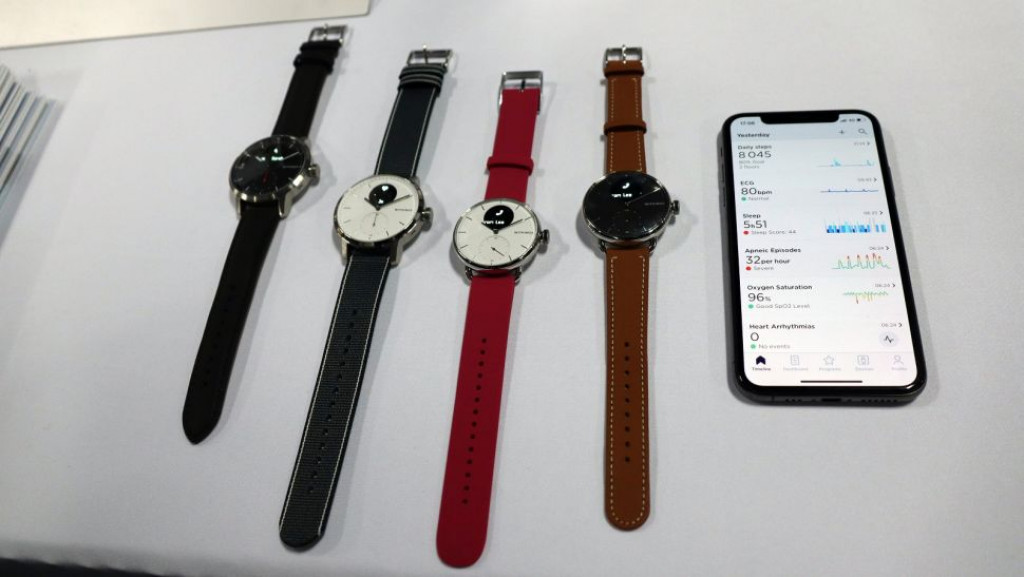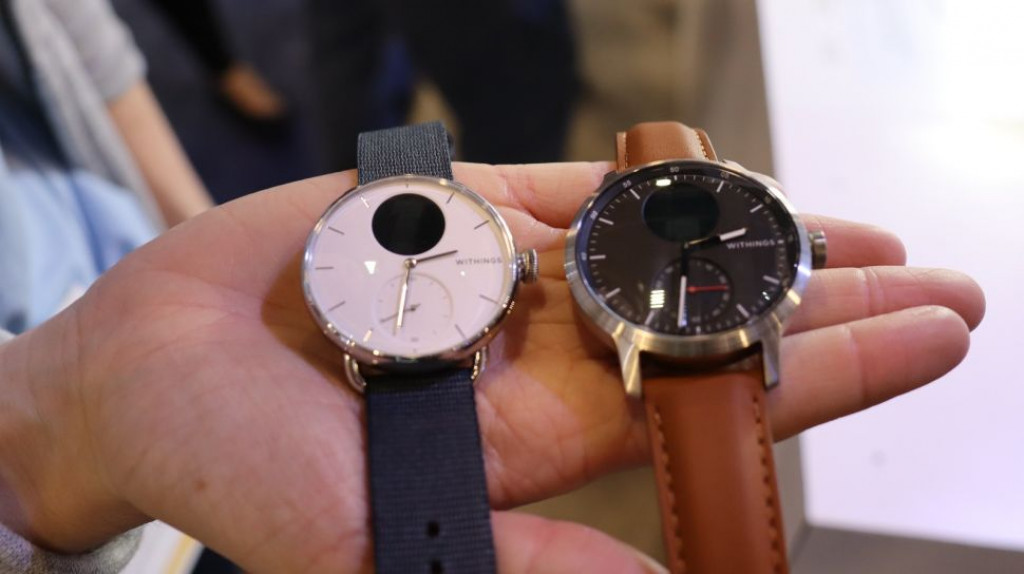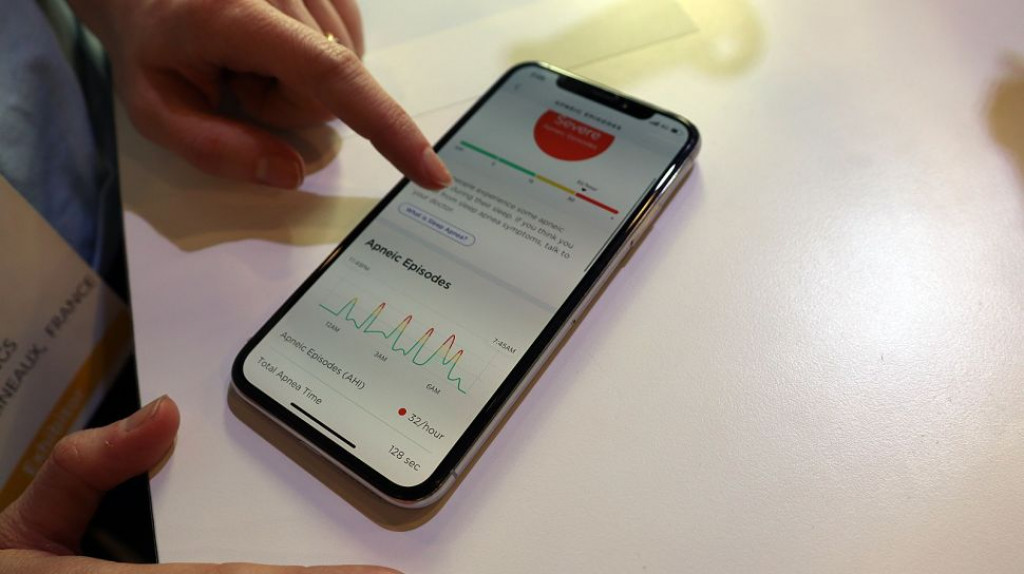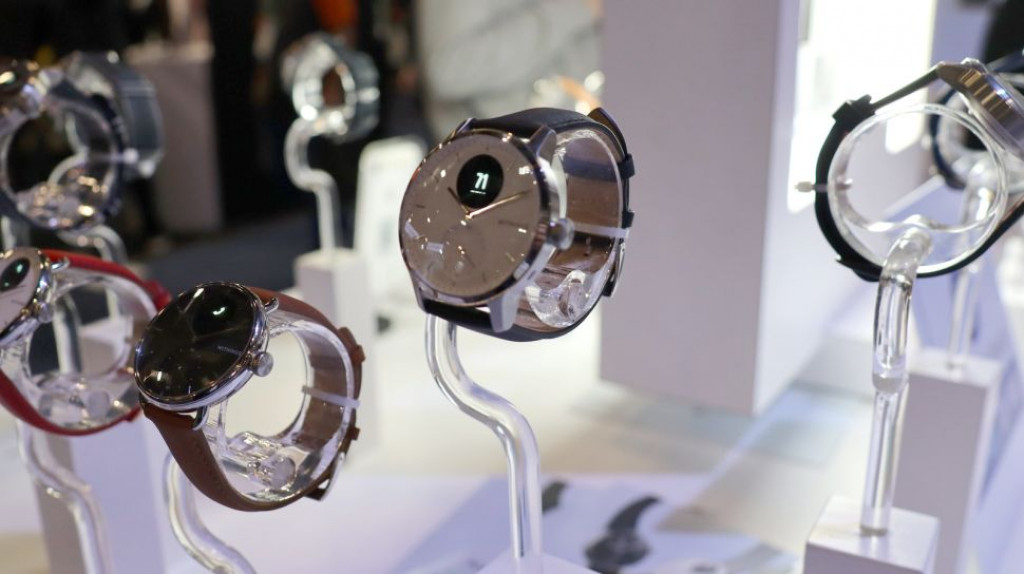
FOR
- Classy traditional timepiece look
- Passive heartbeat and apnea tracking is great
AGAINST
- Price approaches techier smartwatches
- Small digital display shows little
The Withings ScanWatch is the next hybrid smartwatch from the French company, and at CES 2020, they revealed it to the world: a wearable that passively tracks for heartbeat irregularities and sleep apnea while looking handsome to boot.
It’s also the priciest hybrid smartwatch that Withings has produced – features and looks come at a cost that‘s approaching the price tag of premium smartwatches. But that’s apparently what users requested, and the ScanWatch delivers.
Appropriately, the ScanWatch is the culmination of all Withings’ previous wearables – the fitness tracking of the Withings Move mixed with the ECG tracking and mini-display in the Withings Steel HR. The passive heart arrhythmia and apnea elevates the ScanWatch to a higher level of medically assistive yet aesthetically pleasing tech wearables.

Price and availability
The ScanWatch price is set, but its availability isn’t. That’s because Withings is waiting for clearance from the FDA and European CE authorities to sell these devices with such claims of medical precision. But Withings is confident this won’t be an issue, and anticipates a Q2 2020 release in the US and Europe, online and on Amazon (as well as Best Buy in the US). Other regional availability hasn’t been announced.
The price differs between the two sizes, which have slightly different appearances. The smaller 38mm version of the ScanWatch has a sleek rounded look with a glossy finish, and will retail for $249 / £229 (around AU$360). The larger 42mm model has a far thicker metal bezel for $299 / £279 (around $433).

Design
In a field of tech-heavy smartwatches, Withings’ hybrid watches continue to be staggeringly classy alternatives. They won’t be mistaken for very expensive timepieces, but their traditional stylings make them handsome options for the fashion-conscious. The ScanWatch is no exception, though it’s inherited a lot of its look from the Withings Steel HR.
That is, there’s a traditional analog watch dial with large hands, a smaller analog sub-dial inset in the watch’s bottom half, and a circular PMOLED digital display in the top half. This is surrounded by a metal bezel – as previously mentioned, it’s a smaller affair in the 38mm version, while the 42mm model’s bezel is bulkier with pronounced lugs (the bits extending to hold the strap).
Both versions have the same-sized crown, and the ScanWatch is the first Withings smartwatch to have one. It’s an attractive metal that matches the chromed bezel, and makes switching between various trackers on the digital display much easier than swapping through them via button press, as on the Withings Steel HR.
Unlike the Withings Move ECG hybrid watch that opted for clear plastic front to save on cost, the ScanWatch has sapphire glass over its dial, which is a classier look – though, obviously, you’re paying for the privilege.
Like other smartwatches, the underside of the ScanWatch houses its suite of sensors. More on these later, but they include the PPG sensor (passive heartbeat irregularities), ECG (an atrial fibrillation detector), and SpO2 (sleep apnea).

Health tracking
The ScanWatch inherits all the previous Withings health and fitness tracking capabilities, including heart rate and steps/exercise monitoring viewable on the paired Health Mate iOS/Android app, but the new capabilities are twofold: passive heartbeat irregularity and sleep apnea.
The ScanWatch uses its PPG sensor to passively track your heartbeat for irregularities – not constantly, as Withings press material implies, but at various times throughtout the day. The ScanWatch waits until you’re dormant (awake, but not moving or exercising) and checks your heartbeat. If it detects an irregularity, the ScanWatch prompts you to take a proper ECG, which uses separate sensors.
Taking an ECG works just like on previous Withings smartwatches: use the crown to scroll to the ECG option, activate it, and press two fingers on either side of the metal bezel (doesn’t matter where) to complete the circuit. The ScanWatch takes a 30-second reading and automatically prepares a report in the Health Mate app, which you can send to your doctor as a PDF.
To detect possible sleep apnea, the ScanWatch uses SpO2 sensors, which emit and absorb light waves passed through blood vessels. Like the sensors clipped on the end of your finger during a doctor’s visit, the SpO2 sensors check the oxygen levels in your blood, and if they dip at periods during the night, the ScanWatch charts those moments in a report you can send to your doctor as a PDF.
The apnea tracking must be manually activated, as it drains the battery – how much, Withings wouldn’t say, but the point is a bit moot as the amount of sleep disturbance isn’t as important as its existence itself. If the ScanWatch detects apnea, you should then consult a physician.
Withings consulted with medical professionals when creating the scanning methods to ensure they’d be, well, useful for medical professionals. Same goes for the automatically created PDF reports.

Interface and battery
The ScanWatch itself has little interface to speak of – its small screen displays one thing at a time, from steps to ECG readings, which you can rotate through one at a time by twisting the crown. All the other info gathered by the watch is viewable in the paired Health Mate app.
Though we didn’t get much time with it, the Health Mate app should be relatively unchanged from its prior iterations, with the exception of the overnight apnea scanning and PPG passive heartbeat scans.
The battery is another big change from prior Withings wearables. While those used so little battery that they got away with packing a standard watch battery, which lasted about a year, the ScanWatch has more active capabilities – and thus, its capacity runs out of juice after an average of 30 days (or less if wearers use the overnight apnea scan more often).
Withings has also made the ScanWatch battery rechargeable, and there’s a charger included in the box.

Early verdict
The Withings ScanWatch is the most refined wearable to come from the company. It’s an attractive smartwatch with a more traditional timepiece look that will probably make it an easier sell for older and health-conscious users – the demographic who would likely make best use of the apnea and heartbeat irregularity tracking.
It’s also pricey, and likely less enticing to fans of Withings’ more affordable hybrid smartwatches. The price has crept up to rival older but still capable health-tracking wearables like the Samsung Galaxy Active 2 or the Apple Watch 4.
But a key part of the ScanWatch’s appeal is its simpler appearance, and as the classiest-looking iteration of Withings’ design philosophy, it will probably be great for you if you want a higher-end looking health-tracking product.
We’re eager to fully review the ScanWatch and see whether the company’s finest-looking watch is just the right balance of attractive design and on-device functionality – or if we prefer having all that tracked data on our wearable’s screen instead of offloaded to a paired device.
Source: techradar.com









































